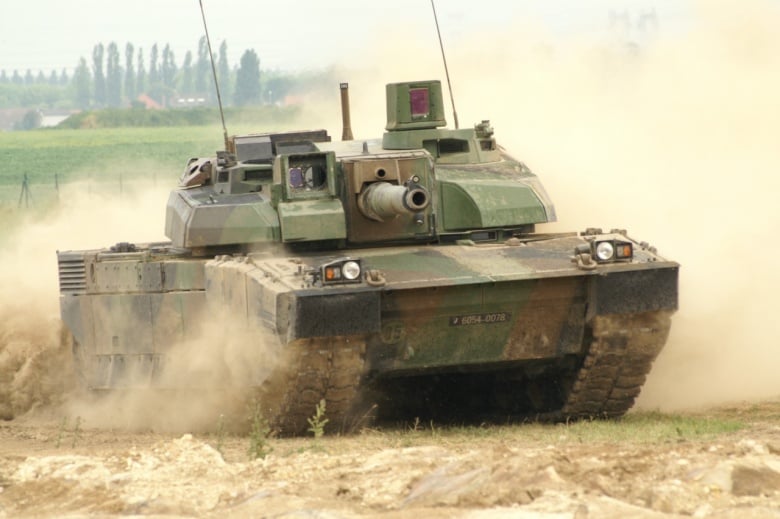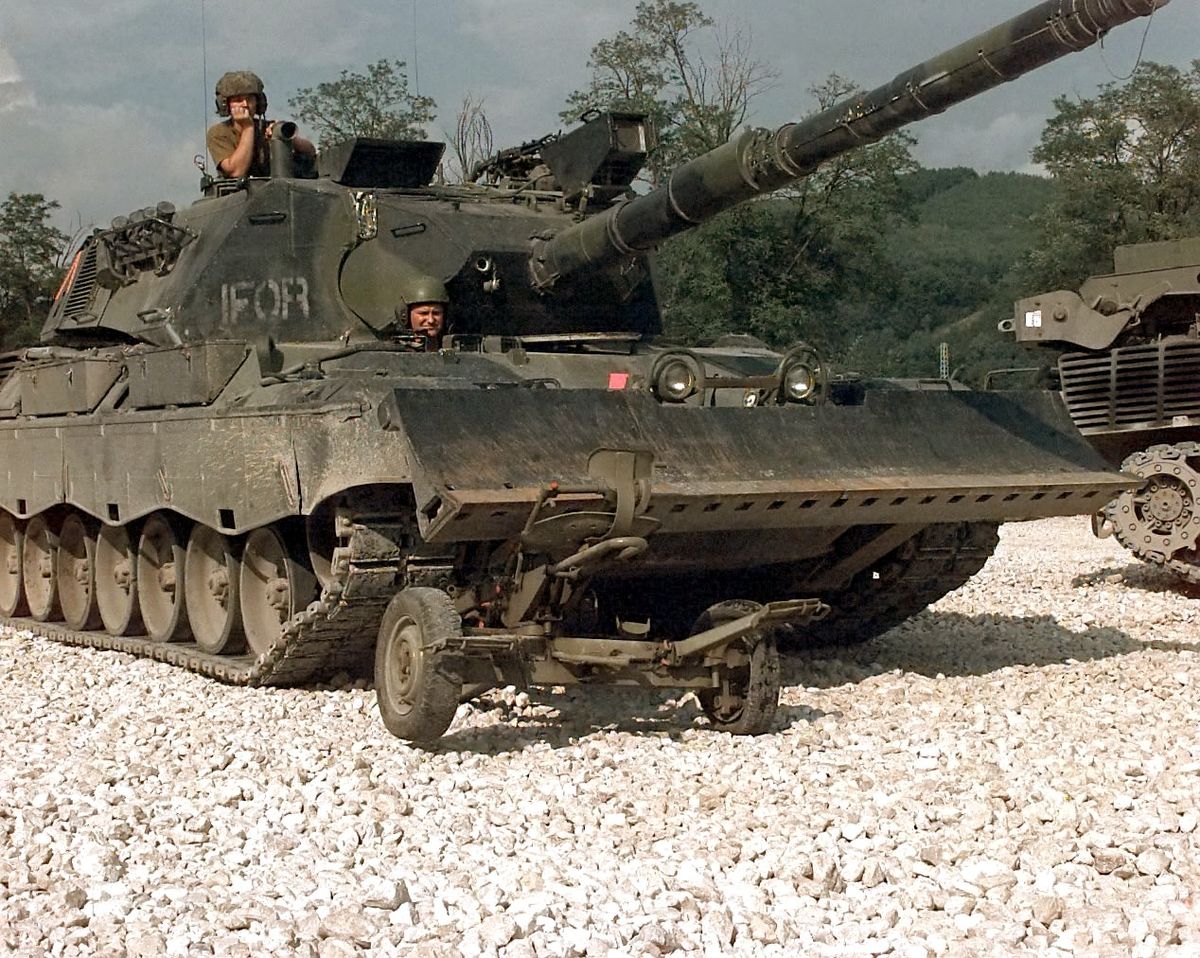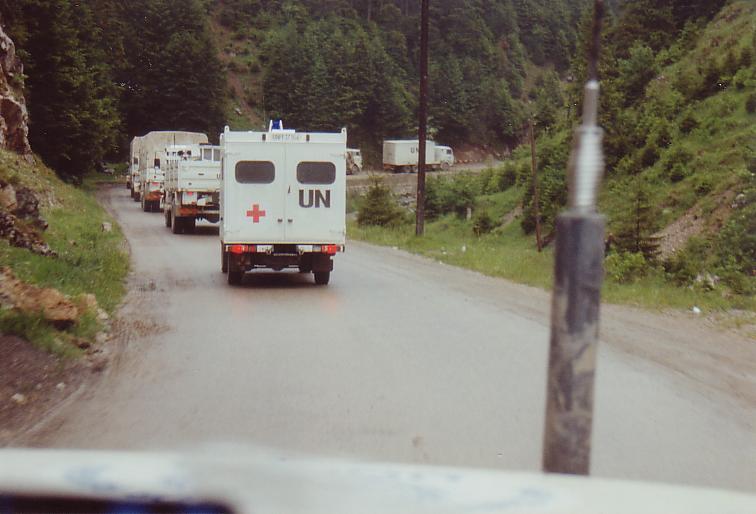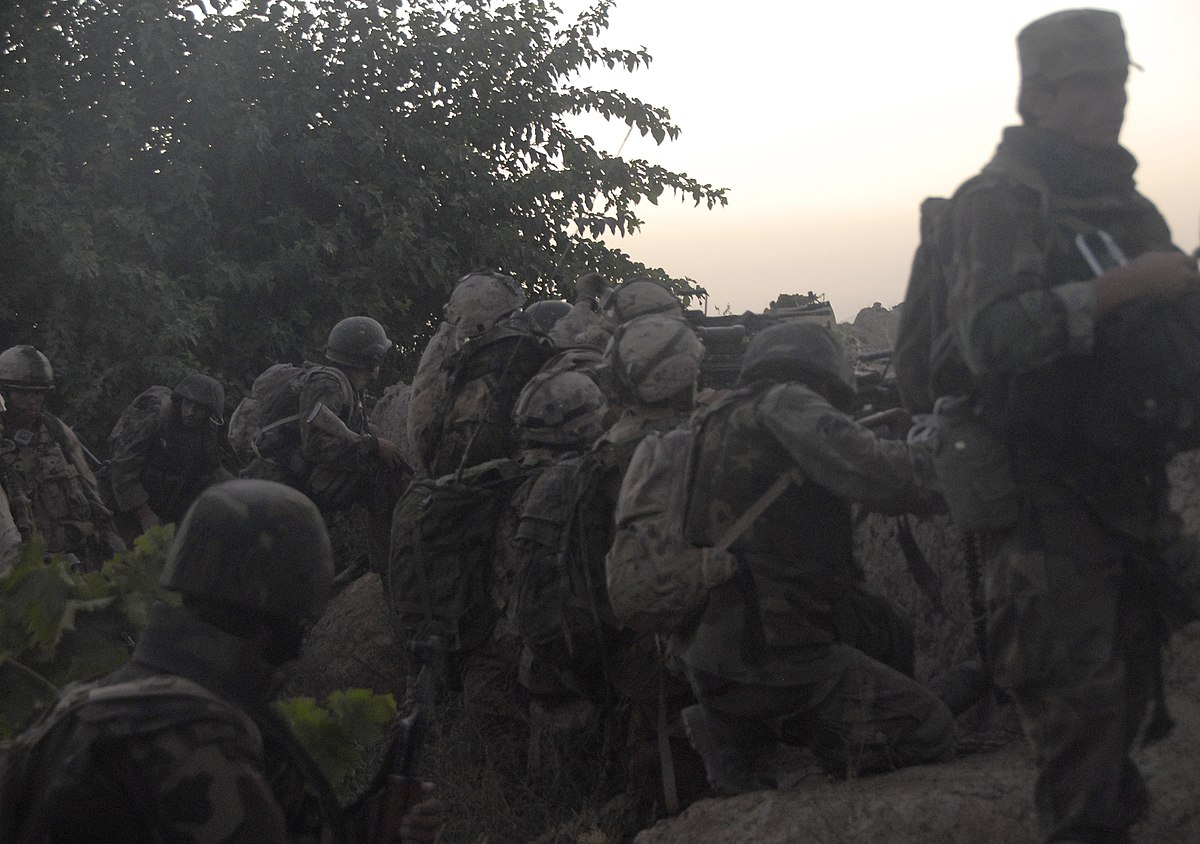Re-reading this post.....
Is there any reason that given that the Leopard 1 was originally designed for 90mm gun (which was substituted for the L7 105mm gun); it's original light/thin armour being the consequence of the philosophy 'that the next large war would involve extremely powerful bombs/NBC (enhanced radiation weapons) threats that would nullify any armour protection', and hence high firepower and agility became paramount to its design, the evolution showed the Leopard could and was able to be up armoured....
So, I'm thinking all new built Leopard 1H's ('H' naturally being for 'heavy') by the 1974's! I say 1974, because this is when the definitive shape of the Leopard 1A4 was placed in production - it having the new roomer welded turret design of the 1A3; new armour consisting of two spaced steel plates with a plastic filling between them; a wedge-shaped gun mantlet; The improved TRP 2A independent sight and the PERI R12 independent night sighting system for the commander; a new computerized fire control system and the new EMES 12A1 sighting system to aim it.
Armour:
As for 1974, and new-build Leopard 1H's, is their any reason they can't be build with Chobhm armour from the getgo?
Engine, Transmission and Mobility:
Was MTU technically able to deliver a derivative of it's MB 383 CaM engine and transmission up into the 930+hp range, so as to compensate for a substantial armour upgrade, while still retaining it's original renowned and revered agility?
Upgrade suspension, tracks, torsion bars systems to facilitate increased weight growth and maintain battlefield performance.
Armament:
The Israeli's would prove without a doubt that the L7 105mm gun ammunition was unquestionably updatable to both match and defeat Soviet tanks up to T-72's class into the 1980's. Or if NATO is still apprehensive, why not channel NATO scientific knowledge and research into an all-out priority development of a smooth-bore 105mm tank gun like that eventual developed by Rheinmetall 105mm smoothbore gun in the late 80's I believe. But saying this, I just stumbled across the following:
"
In 1975 a Strv 102 ( up-gunned Swedish Centurion Mk.3 or 5) was fitted with a Rheinmetall 10,5 cm Smoothbore gun. The vehicle partook in live fire trials carried out between September & December 1975. During the tests a armor piercing fin stabilized discarding sabot round was fired against a variety of targets (pictured below) with different hardness and layout, the powder charge also varied between shots."
(
https://fromtheswedisharchives.wordpress.com/2019/01/03/rheinmetall-105-cm-smoothbore-performance/)
So, as one can see, a 105mm smoothbore gun, which itself more powerful than the rifled L7 105mm gun is very possible for the given time frame!
Another comparison -
British 105 mm L7 rifled gun has a barrel length 5345 mm, chamber volume 8.1 l, design pressure 525 MPa, its weight 1287 kg.
vs
The Rheinmetall base gun 105mm SB has a barrel length 5350 mm, chamber volume 8.1 l at a design pressure of 680 MPa, its mass 1245 kg.
(Sure, one could probably say why not just bring forward the development of incorporating the Rheinmetall Rh120 L/44 120mm smoothbore gun a decade earlier, but in reality the 120mm fitment came with the price of less onboard rounds carried and available, a hefty workload for the loader in the confined space of the Leopard 1....)
And finally, as I've already alluded to in my previous post, one can not of course argue or challange the excellent range of support vehicles - bridge layer, recovery vehicle, engineering vehicles, SPAAG which are based on the Leopard 1 chassis, which in my scenario would be mated to the Leopard 1H system as their basis.
(Source: Robert Jackson, 2007
Tanks and Armoured Fighting Vehicles)
Regards
Pioneer







